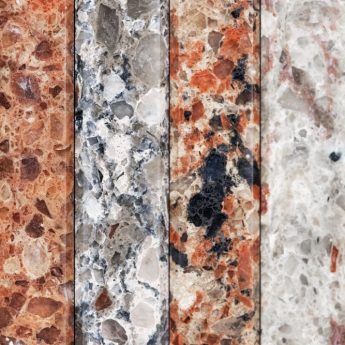House Rendering: Which Render is Right For You?

Rendering your house is a lifelong option, and it would be hard to remove once you have made it all over your house. If your house’s bricks crumble or look shabby, then rendering is a viable choice.
Furthermore, it is possible to paint or supply make your house as a through-colour combination. Although through-coloured rendering appears to be a little more costly, maintenance is lower, and it requires no subsequent re-painting.
House rendering can be painted or supplied in any colour you choose, as mentioned above, but strive for a tone that matches either with the materials that are used in the rest of your home.
However, if you want to blend new parts of a building into an existing one or to enhance your home curb attraction, you can render your walls. To safeguard the rendering layer from cracking or damp infiltration, most rendering professionals would finish with a coat of paint.
You can even adjust the fabric of your sofa when you are on it to match the look that you are trying to create. Or, you can just clean it, learn how to clean your upholstery fabric sofa if you want to save money. If you’re planning on rendering your house, here are (6) known types of rendering that you should know.
1. Cement Render
Cement renders are some of the most robust forms of renders that are available. Stronger than lime render, when applied, this sealed or painted render may provide a building with additional support. It helps prevent moisture or water from penetrating through exterior walls.
Cement renders are a common choice for both builders and homeowners because, compared to lime or polymer renders, they are a more cost-effective alternative, cures faster than others, and are usually easier to apply. It is one of the most common choices for rendering.
However, while it is cheaper than other rendering solutions, you should make sure you apply it properly because it can easily crack if not.
2. Lime Render
Lime rendering is typically used to render the low-quality rubble, stone, and porous brick walls in exposed areas. For the undercoat and the finished surface, this type of rendering continues to be used today. Lime plaster on older stone buildings is seen more. Lime plaster is robust and resistant to severe weather, unlike clay plaster.
While it hasn’t been commonly used for over half a century, due to its versatile and breathable benefits, lime has undergone a recent resurgence. Individuals even like the distinctive look it achieves. It is a specialist product and should only be used by those who know how to work with it, especially as unique ingredients and post-application washes are needed.
In addition to it, it offers a beautiful and elegant wall finish, while it takes a longer time to apply, and it is quick to fix and gives you more space to manoeuvre.
3. Acrylic Render
This render is used for previous renders only as a finishing coat. For design purposes, it includes aggregates, a substance created from fragments or particles loosely compacted together, to provide a texture that is not smooth. Depending on the look you wish to achieve, the size of the aggregates will vary.
In addition to that, to help seal the surface of the render and the surface below it, an acrylic rendering can be used and can also be used to help conceal improvements or unnecessary defects. It also rapidly renders and allows the materials to breathe, which helps dry the wall
Also, it is mostly used over existing finishes as a topcoat. For longevity and to prevent the need for cleaning, silicone can be added.
4. Polymer Render
This style of rendering is pretty new. As an integral part of the rendering process, white cement polymer renderers employ a silicone water repellent. Although it quickly repels water on the surface, it also allows water vapour to move through it and allows easy breathing of the substrate underneath it.
For most brick and wooden houses, this form of rendering can be used. Polymer renders are commonly sold in bags with either white cement or lime as a basis, pre-mixed.
Furthermore, they also incorporated polymers and other materials dependent on plastic to make the render less vulnerable to cracking. They are available in several colours and are also through-coloured, which removes the need for painting.
5. Insulated Render
This particular form of rendering is a type of external wall insulation’ or ‘EWI’ that can decrease the carbon footprint of your homeowner. Up to a third of the heat of a building may be lost by walls that aren’t properly insulated.
In addition to that, external wall insulation or insulated rendering is also the best option to insulate your home when a wall has no space for cavity wall insulation, such as Single-skin walls, steel or wood-framed walls, or prefabricated cement panels, like solid walls.
6. Monocouche Render
Monocouche in French means’ single bed ‘or single coat, and this means that as expected, only one coat is needed. The product is based on the rendering of cement and is ready for mixing with water, then trowelling or spraying.
Furthermore, you can recover the material costs with reduced labour and maintenance fees, expensive to obtain but easy to apply. They’re self-cleaning, they’re not going to crack and colour themselves, so there’s no need for painting.
It does not need a base coat for this modern style of rendering and is also considered a good match for new buildings and properties. By incorporating lime or polymer renders, Monocouche renderings are available in a wide variety of colours.
Takeaway
Even if you live in a quite modern house, there are some very good reasons for your property to be rendered. You should carefully consider the form of rendering you want to go for and whether you want to insulate at the same time because this is an investment that will be on your wall for several years, and it will be costly to remove or repair it.
Read Also:











Leave A Reply